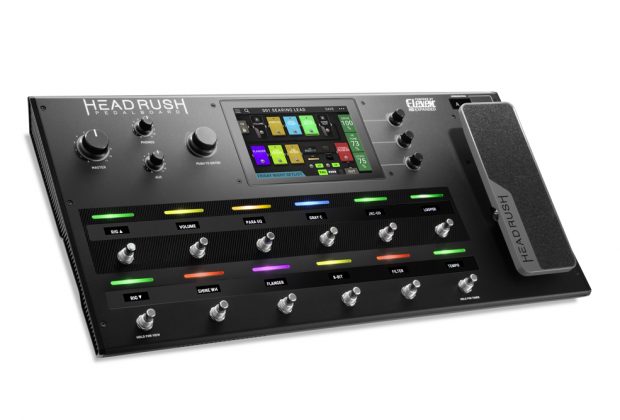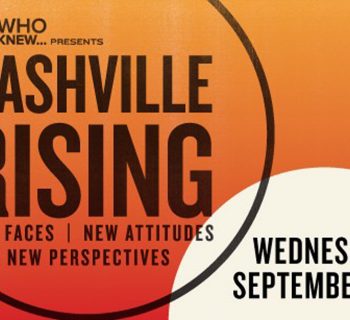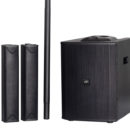HeadRush is a guitar effects processor based around the company’s legacy, Eleven HD Expanded rack processor, and which has been used as a foundation to build an entirely new DSP Architecture. Eleven HD Expanded is the name of the DSP software that powers the HeadRush Pedalboard. In general, HeadRush has enhanced features, lots of new effects and better overall performance. It sounds more realistic than its predecessor and offers significantly more flexibility for users in creating and modifying their pedalboard presets (called “Rigs” in HeadRush).
What makes the HeadRush different from any other guitar effects processor ever created is the 7” touchscreen and a quad core CPU that makes for an extremely intuitive interface, so much so that I found it possible to do much of what the unit is capable of without referring back to the manual. The quad core CPU processor is fast enough, so there is no discernable lag or latency when switching between presets.
The front of HeadRush is centered on the touchscreen, 12 capacitive footswitches with corresponding readouts and three parameter controls that allow you to fine-tune whatever Amp or Cabinet or Pedal that is currently onscreen. There is also an on-board expression pedal (where you can also plug in and assign your own Expression or Wah Pedal to the Auxiliary input) and master volume and headphone volume controls. The rear of the unit has balanced and unbalanced outputs, an effects loop for patching in your own pedals, a MIDI interface and a selector switch for controlling line or Amp output and a USB interface for connecting HeadRush to your desktop computer.
For me, the user interface on HeadRush would be almost perfect if there were a Bluetooth-enabled App or desktop software that enables you to control the HeadRush from your phone or PC. As it is, the user interface is one of the best graphic user interfaces I’ve ever seen on any piece of technology; however, the lack of an available App or PC interface is, to me, a hindrance as the size and bulk of the unit does not really lend itself to desktop or “Amp top” use (not to mention HeadRush is purpose-built to be used on the floor).
That said, you can (with the touchscreen interface control) modify and program virtually any aspect of your signal path in both studio and live situations. HeadRush also features a hands-free mode that allows you to edit any parameter without ever bending over and putting your guitar down.
If as a guitarist you are constantly swapping out and rearranging your own pedal boards, you will love HeadRush and its “guitar-centric” user interface. You can on-the-fly swap the order of your pedals and fine-tune parameters in real-time. HeadRush has some other groundbreaking features, like the Reverb Tail/Delay Spillover which allows you to control the spillover of a selected effect’s Reverb tail and delay spillover when switching between different presets.
As a live tool, you have the ability to dial your pedalboard creations into perfectly ordered set-lists centered around a specific list of songs (called Set-lists). Another standout feature is the Looper; you can record up to 20 minutes of music with overdubs and effects, etc. (way more recording time than any other all-in-one effects processor on the market). This makes HeadRush a great songwriting tool as you have the capability to save and export your loop creations to your PC.
With HeadRush you have control over pretty much all aspects of your signal path, whether you are running in mono or stereo, whether you are running your effects signal path in series or parallel. You also have control over the order of effects, whether pre or post EQ on the amp, the kind of cabinet, microphone used to mic the cabinet, the angle placement and gain and the impulse response of the cabinet itself, not to mention what kind of speakers you have in the cabinet.
HeadRush does not have as many amp, cabinet and effects models as other comparably priced all-in-one effects processors on the market. To me that’s not necessarily a bad thing as HeadRush is a lot easier to navigate and put together different amp and cabinet combinations from a manageable set of choices. HeadRush is capable of some truly authentic amp models and has the ability to incorporate accurate third-party IR (impulse/response) algorithms into your speaker cabinet designs.
So does HeadRush really work well as a conventional pedal board (i.e. as a front end or effect loop-driven effects processor from and into your favorite guitar amp)? To me the answer is you will get more of what you want to hear going through a full range flat response “FRFR” speaker (HeadRush makes one). The caveat here is if you do have a dedicated guitar amplifier that you plan to consistently use with HeadRush, you will need to tailor the sounds to get what you want. Personally I’ve had better results using sophisticated guitar effects processors like HeadRush with color neutral guitar amplifiers (read: Solidstate) rather than tube amps.
Packing all these great features into a truly groundbreaking interface and delivering it in a great piece of industrial design that’s built around the way guitarists actually think makes HeadRush, to me, one of the best guitar effects processors ever created. The touchscreen interface really does break new ground and succeeds in making a highly sophisticated piece of technology dead simple to operate.
MSRP $999.00 – See HeadRushfx.com for further information














